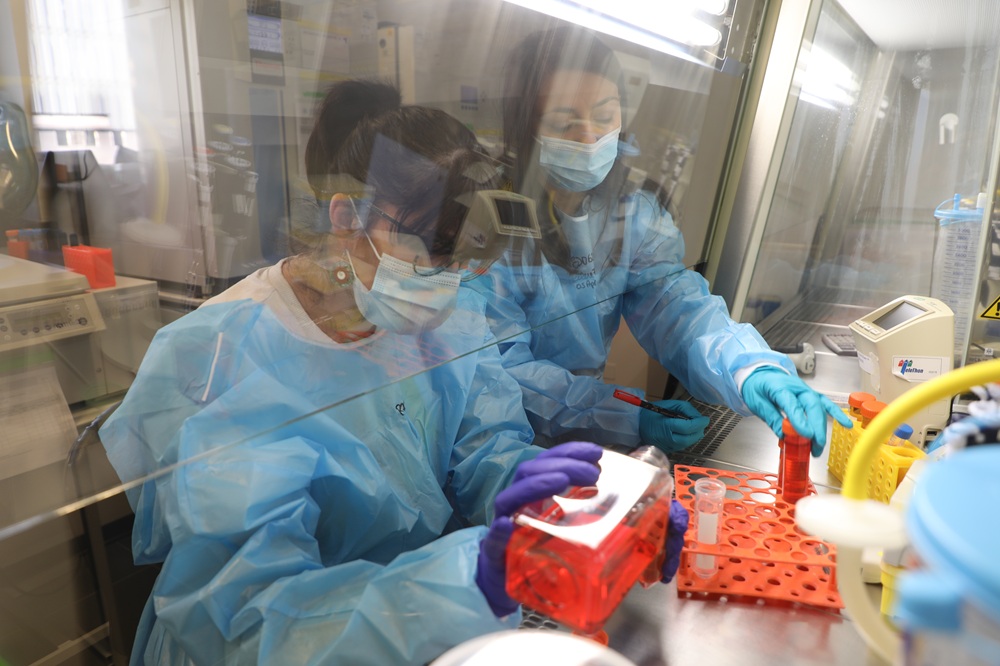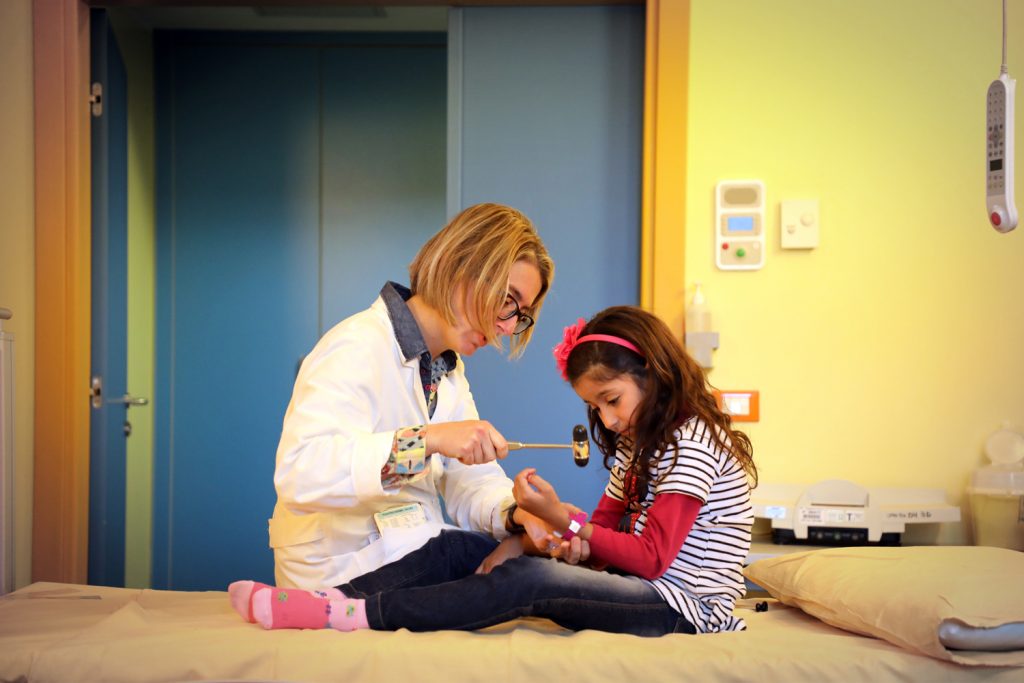The Institute, led by Luigi Naldini, is world-recognized centre of excellence for research and clinical translation of advanced therapies. Founded in 1996 as a joint venture between Fondazione Telethon and Ospedale San Raffaele in Milan, has the mission of performing cutting-edge research in gene and cell therapy and to translate its results into therapeutic advances, focusing mainly on rare genetic diseases.
More recently SR-TIGET has also embarked on developing applications of its cell and gene therapy platforms to the treatment of certain types of cancer.
In its almost 30-year history, SR-TIGET has provided pioneering and continued contributions to the gene and cell therapy field with relevant discoveries in vector design, gene transfer and gene editing strategies, stem cell biology, identity and mechanism of action of regulatory cells in immune responses and innate immune cells in cancer.

SR-TIGET was among the first gene therapy institutes worldwide able to embrace the full journey of Advanced Therapy Medicinal Product (ATMP) development - from the discovery of therapeutics to preclinical modelling, regulatory strategy, treatment of patients in first-in human phase I/II clinical trials and finally market registration - setting a new model for translational research in gene therapy.
This visionary model led to two out of the nine gene therapy drugs currently on EU market for genetic diseases:
SR-TIGET pioneered the development of the lentiviral vector platform (viral vectors originally derived from the virus responsible for AIDS, HIV), which is now one of the most widely employed tools in biomedical research: what was initially perceived as an elegant proof of principle of an unlikely and fearsome technology has evolved into a cornerstone of modern biomedical science, whose applications include ex vivo and in vivo gene therapy, cancer immunotherapy, vaccine manufacturing, gene discovery and target validation in cellular and animal models, generation of transgenic animals.
SR-Tiget also made important contributions to the field of genome editing, steadily contributing to its advances for the treatment of human diseases and providing experimental frameworks and tools that are now widely adopted by the gene editing community.
The institute employs about 300 people in research and development, clinical research, administration and research management.
From the laboratory to the patient
Under the guidance of Luigi Naldini, 18 research groups focus both on fundamental and translation research projects, which span from the development of gene therapy and (epi)genome editing approaches, to the study of the biological properties of cells and their behavior to manipulation, the investigation of disease mechanisms and biological processes. The Institute’s unique ecosystem enables a continuum between research laboratories and clinical units that nurtures a virtuous bench-to-bedside and back cycle where clinical results inform laboratory research, that in turn enables clinical protocols improvements – making translational medicine a tangible reality.
The treatments developed at SR-TIGET are transforming the lives of children from all continents. So far, over 150 patients - affected by five different diseases - have successfully received treatment. SR-TIGET is the top-ranking centre in the world for hematopoietic stem cell-based gene therapy for genetic disease both for the total number of patients treated, disease types and overall successful outcome: about one fourth of all patients treated with hematopoietic stem cell-based gene therapy worldwide have been treated at our Institute.

This translation from laboratory research to patient therapies is made possible by several unique features of the Institute:
- location within a hospital of excellence - such as the IRCCS Ospedale San Raffaele - and the presence of a dedicated Clinical Research Unit directed by Alessandro Aiuti, SR-TIGET Deputy Director. The CRU includes a Clinical Hematology Research Unit and a Pediatric Clinical Research Unit, and it is supported by the SR-Tiget Clinical Trial Office, the SR-Tiget Clinical Lab and the “Just like home” program dedicated to patients and their families. The CRU works close cooperation with the Pediatric Immuno‐Hematology Unit of Ospedale San Raffaele (directed by Alessandro Aiuti) and the San Raffaele Stem Cell Program (directed by Fabio Ciceri).
- advanced development facilities - structures managed by specialized personnel, which allow to translate the therapeutic strategies developed in the laboratory into therapies, focusing on safety and efficacy aspects (Process Development Laboratory, GLP Test Facility, Vector Integration Core, Immune Core) unique in-house expertise in clinical development and regulatory affairs - a rare strength that enables the Institute to navigate the complex path from discovery to approval.
- Strategic partnerships - collaborations with pharmaceutical companies and start-ups born from the research of the institute foster the ultimate development of the innovative therapies.
The strategic lines of the institute
SR-TIGET research is organized along five strategic lines, each dedicated to a particular therapeutic strategy and goal. These lines integrate fundamental biology with cutting-edge technologies to drive the development of transformative therapies.
Ex vivo gene therapy
Ex vivo gene therapy involves the genetic correction of patient hematopoietic stem cells (HSC) through viral vectors that have been modified to provide functional versions of defective genes. Once corrected, the cells are reinfused into the patients, where they engraft and are able to restore the missing function to the body. This research area has the long-term goal of advancing HSC gene therapy to standard-of-care for some rare genetic diseases.
This approach has already been successfully applied by SR-TIGET for diseases of the immune system (ADA-SCID, Wiskott-Aldrich syndrome), blood (beta thalassemia), nervous system (metachromatic leukodystrophy) and metabolism (Hurler syndrome). Research is currently ongoing in the Institute to apply the same strategy to other genetic diseases, including osteopetrosis and lysosomal storage diseases such as alpha-mannosidosis, mucopolysaccharidosis type 4 A and B.
Within this research area, SR-Tiget scientists also investigate biological properties of HSCs and hematopoiesis relevant for translation, a optimize HSC manipulation protocols, and rigorously assess safety aspects, including vector integration profiles and genotoxicity assessments, to ensure both efficacy and patient safety.
The research groups involved are those of:
- Luigi Naldini
- Alessandro Aiuti
- Maria Ester Bernardo
- Raffaella Di Micco
- Andrea Ditadi
- Giuliana Ferrari
- Eugenio Montini
- Daniela Cesana
- Anna Villa
- Alessandra Mortellaro
In vivo gene therapy
In vivo gene therapy allows to provide working versions of defective genes by administering engineered viral vectors directly into the patient's body. Within this research area, SR-Tiget scientists focus primarily on liver and brain as target organs, investigating the biology of their cells and improving the lentiviral vector-based gene therapy platform to target them, with the goal of advancing clinical applications for genetic diseases affecting hepatic metabolism and the central nervous system.
The research groups involved are those of:
- Alessio Cantore
- Angela Gritti
- Gabriele Ciceri
- Michele Gabriele
Gene and epigenetic editing
These approaches aim to correct genetic defects by correcting the sequence of mutated genes (genetic editing) or by modulating gene expression through targeted epigenetic modifications (epigenetic editing). Similarly to gene therapy, the editing can be performed both ex vivo and in vivo.
At SR-TIGET, scientists focus on developing and optimizing editing platforms in terms of safety and efficacy and investigating how target cells respond to these procedures. Moving towards clinical translation, the Institute is actively exploring the potential of:
- ex vivo gene editing for some primary immunodeficiencies in which "traditional" gene therapy is not applicable, such as HyperIgM Syndrome – for this indication the Institute is set to conduct one of the first clinical trials worldwide based on HDR-mediated gene correction, and the first ever of this kind on HSCs.
- in vivo epigenetic editing for some triplet expansion diseases where the genes involved are responsible for the production of a toxic protein (e.g. Huntington's disease), leveraging SR-Tiget’s proprietary hit-and-run gene silencing platform to selectively switch off the pathogenic genes.
The research groups involved are those of:
Modulation of immunity
In addition to being the first line of defense against pathogens such as viruses and bacteria, the immune system can critically modulate the efficacy of therapeutic interventions. SR-TIGET scientists study the cellular and molecular mechanisms underlying innate and adaptive immune responses, with the aim of developing strategies to make gene therapies even more effective by preventing the immune system from neutralising the effect of the therapy and inducing immunological tolerance.
In parallel, SR-TIGET scientists study the mechanisms driving autoinflammatory diseases, which are caused by dysregulation of innate immune pathways. By dissecting the molecular bases of these disorders and modeling them in relevant systems, they aim to identify therapeutic targets which can lay the foundation for novel gene therapy strategies.
The research groups involved are those of:
Cancer immuno-gene therapy
Building on nearly 30 years of gene therapy research for rare genetic diseases, the Institute is leveraging on this knowledge and tools to devise novel strategies for cancer immuno-gene therapy. Within this research area, SR-TIGET scientists apply gene addition to the gene- and cell-based delivery of immunostimulatory cytokines for cancer immunotherapy and study the biology and epigenetics of immune cells within the tumor microenvironment.
Immuno-gene therapy approaches are currently being studied for glioblastoma multiforme, pancreatic cancer, colorectal cancer and liver metastases.
The research groups involved are those of:
- Mario Squadrito
- Luigi Naldini
- Renato Ostuni
- Daniela Cesana